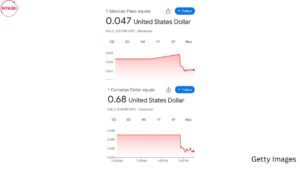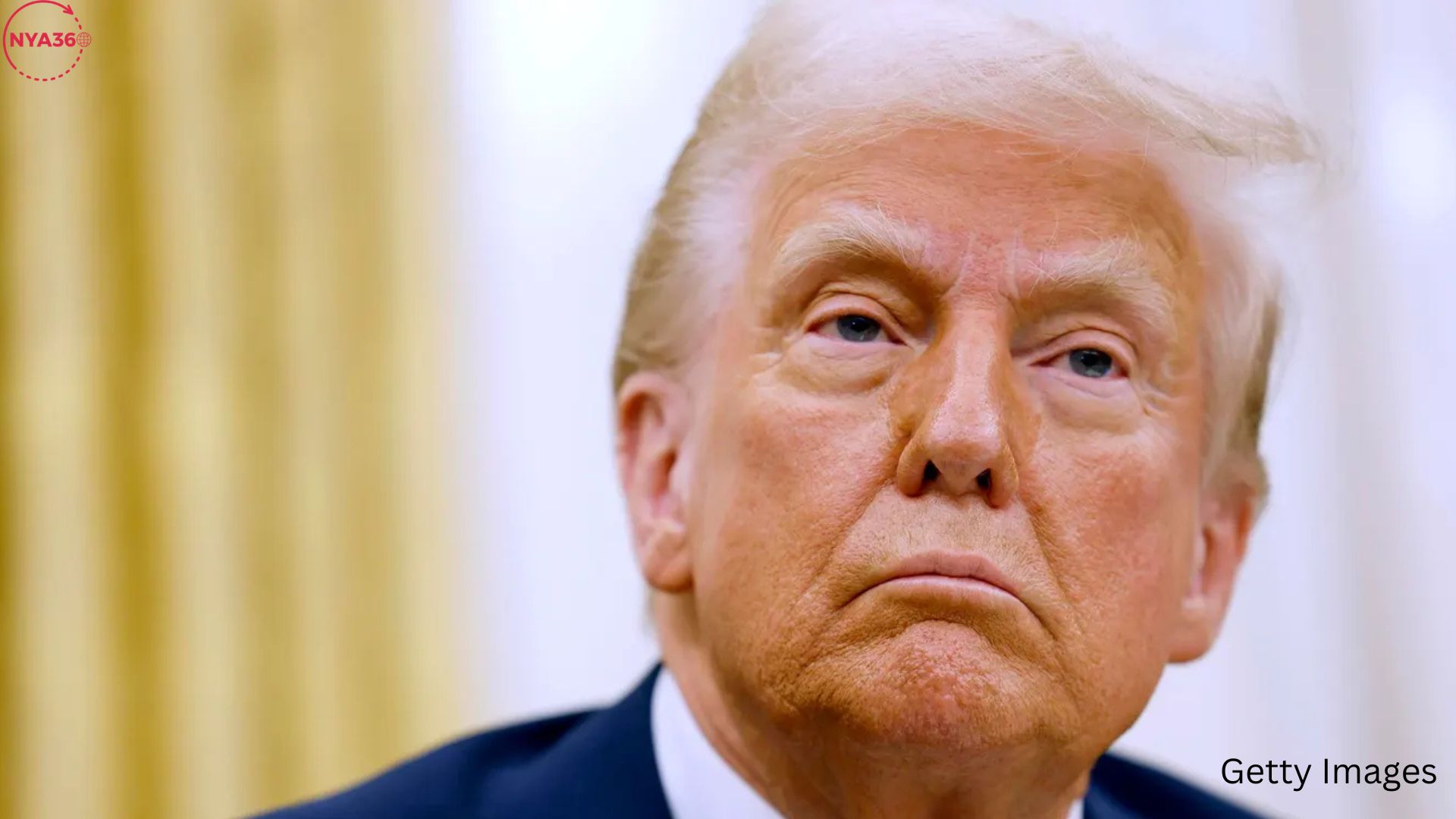A trade war is one of international economic history’s most unpredictable and consequential events. And when the biggest economy in the world—the United States—decides to be protectionist, it causes a domino effect. The announcement of fresh tariffs by President Trump this week, which target important trading partners and cause concerns of a full-scale trade war, put world financial markets into a tailspin. Who were the first victims? As the European Union threatened severe punishment, two major currencies—the Mexican peso and the Canadian dollar—fell to record lows. The effects of these tariffs extend far beyond simple economics and currency exchange rates; they have the potential to exacerbate geopolitical tensions, cast economic uncertainties into disarray, and threaten the whole fabric of our internationally interdependent economy.
The Latest Development from Trump: The Tariff Bomb
Even though it was probably expected, many were taken aback by President Trump’s announcement of more tariffs. Trump, who is famous for his “America First” rhetoric, has a long history of opposing free trade deals because they hurt American businesses and people. The most recent tariffs are an element of a larger plan to renegotiate trade agreements and restore manufacturing employment to the United States. They target goods imported from Canada and Mexico.
While details about the tariffs are still coming to light, their immediate effects were noticeable: the value of the Mexican peso plummeted to 0.047 USD/USD, and the Canadian currency hit a new low of 68 US cents/USD, its lowest level since 2003. Two of America’s most important trading partners, Mexico and Canada, are seeing their export-driven economies threatened and their economic stability threatened by the tariffs.
The Fall of the Peso: The Worst for Mexico’s Economy
The sharp decline of the peso is the most recent economic setback for Mexico. The country’s already heavy burden of slow growth, increasing inflation, and political instability have been further exacerbated by the imposition of new tariffs. Import prices rise as a result of a weak peso, impacting both companies and consumers financially. Additionally, investors may seek out safer havens for their funds, which could lead to capital flight.
The Mexican government has promised a response to the tariffs, but there aren’t many choices available to them. The economy may take a further hit if retaliatory measures were to extend the trade war, and doing nothing could be interpreted as an indication of weakness. The tariffs present President Andrés Manuel López Obrador with an opportunity to demonstrate his leadership and mastery of the intricacies of global trade.

Canadian Dollar in Crisis: The Loonie’s Lows
The Canadian dollar, or “loonie” as it’s more often called, is also under pressure in Canada. The Canadian dollar’s decline to 68 cents/USD is the currency’s lowest level in almost 20 years, highlighting the country’s susceptibility to changes in U.S. trade policy. Canada, like Mexico, relies largely on commerce with its biggest trading partner, the United States. Businesses will see price hikes, supply chain disruptions, and slowed economic growth as a result of the new tariffs.
Prime Minister Justin Trudeau of Canada has rushed to denounce the tariffs, describing them as “unacceptable” and pledging to protect Canadian businesses. Canada has few choices because more than 75% of its exports go to the United States. Canadian consumers and businesses might be hit hard by retaliatory tariffs, and diplomatic attempts to resolve the disagreement could take a while.
Warning from the EU: A Worldwide Trade War Is On The Horizon
Even though Trump’s tariffs have hit North America the most so far, the EU has also raised concerns. If the United States were to slap tariffs on European goods, EU officials issued a sharply worded statement threatening retaliation. Conflicts between the Trump administration and the European Union over steel and aluminum tariffs and subsidies for aircraft manufacturers are nothing new.
The trade war threat is widespread, as the EU warning shows. There is a danger that the world economy could become unstable if the United States keeps imposing tariffs on its trading partners. Having to deal with the economic consequences of both Brexit and the COVID-19 pandemic is bad enough for the European Union; a trade war with the United States would be an even bigger setback.

The Overarching View: A Precarious International Economy
The world economy is becoming more vulnerable as a result of increasing protectionism, and the currency market instability is simply a symptom of this crisis. Trade flows and supply linkages that transcend continents have driven economic expansion in recent decades, thanks to globalization. However, the latest tariff announcement demonstrated that this system is susceptible to shocks as well.
Trade wars make it hard for companies to plan because of the uncertainty they bring. There is a delay in investments, a disturbance in supply chains, and an increase in expenses. The effect on buyers is a general increase in the cost of living. Furthermore, governments face the difficult task of weighing the benefits of safeguarding home sectors against the dangers of intensifying trade disputes.
Going Forward: Will We Use Diplomacy or Escalation?
The world is waiting to see what happens next as a result of Trump’s tariffs. Is diplomacy going to help the United States and its trading partners calm down the situation, or is the trade war going to heat up, which may be disastrous for the world economy? Current indications are contradictory. Canada and Mexico have both indicated a desire to engage, but the European Union has adopted a stronger stance, threatening retaliation if the United States proceeds with tariffs. With the impending presidential election further complicating matters, the political climate in the US is also uncertain.
A Signal to the World Economy
The impact of trade policy on the world economy has been demonstrated by the devaluation of the Canadian dollar and the Mexican peso. All parties involved—policymakers, corporations, and consumers—should take note. Since every nation is now part of a global network, the decisions made in any one place can affect other parts of the globe in significant ways. The stakes are quite high as the trade war progresses. The world’s economy could be pulled into a protracted period of instability and uncertainty if we don’t figure out how to navigate these tumultuous waters. What leaders decide to do in the next several weeks and months will determine the outcome. The world is keeping tabs, and time is of the essence.
Follow us on Instagram, Threads & Twitter @nya360_ YouTube & Facebook @nya360.





